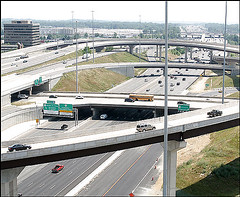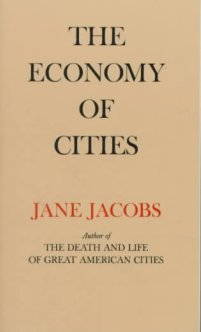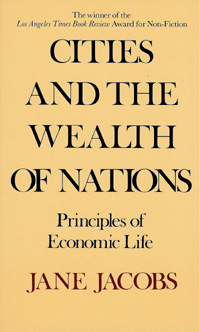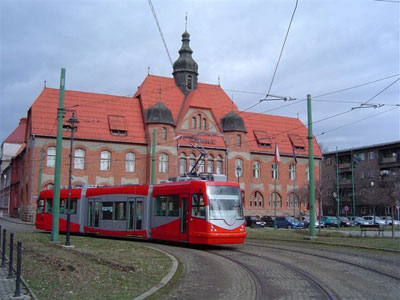"Chance" continues to favor the prepared road builders

Washington Post Photo by Richard A. Lipski Overalls of the I-95 beltway interchange, known as the Springfield Mixing Bowl. Cost $676 million.
From the Bloomberg article "Highways, Rail, Airports Get $44 Billion in U.S. Plan (Update3)"
Highway spending in the measure is “positive,” said Jeff Solsby, spokesman for the American Road and Transportation Builders Association in Washington. “It’s money increasing the immediate needs, putting boots on the ground and workers back on the job at work sites.”
Amtrak, the nation’s money-losing passenger railroad, would get $1.1 billion, approaching the $1.3 billion annual subsidy the carrier currently receives. “There are plenty of things we have that are ready to go,” Cliff Black, an Amtrak spokesman, said in an interview.
The increase for Amtrak may help Fairfield, Connecticut- based General Electric Co., which makes electrical equipment. Amtrak asked in a December memo to Congress for $7.2 billion in stimulus money. The request included $346 million for new train cars for its Acela and Surfliner routes. Bombardier Inc. and Alstom SA build the Acela cars, which run between Washington and Boston.
----
1. I wrote a blog entry on how chance favors the prepared city in the new age of an Obama presidency.
-- How will Obama relate to the District?
2. Ryan Avent has a piece at Grist, "Urban doubt-fitter: What Obama's picks signal for urban policy," that is an assessment of the urban-appropriateness of the initial picks of the Obama Administration.
3. I suppose that like Ryan, I don't think it's the end of the world, but it is very disappointing still. But it doesn't surprise me. We read our own preferences and desires into a candidate and it is a stretch to believe that just because Barack Obama lives in a city and read Death and Life of Great American Cities that he reasons about urban issues the same way the most enlightened of us do, not to mention that he still has to govern with the connected people and build a coalition of people who can wend their way through the bureaucracy and Congress and state and local government.
Still, he is from Chicago, and while Chicago does a lot of great things, there is still a lot of municipal mischief going on there, as these two great series of investigative journalism in the Chicago Tribune show:
-- Squandered Heritage on historic preservation and rampant demolition of eligible properties
-- Neighborhoods for Sale on the use of Aldermanic "authority" to ram and jam often inappropriate development projects into various places within the city.
Of course, that mischief occurs at all levels, as the shenanigans over the Senator chosen to replace Barack Obama has demonstrated. (An understatement.)
Jane Jacobs never hung out with Robert Moses. By necessity as he was a local politician, Barack Obama probably did hang out with the Growth Machine types back in Chicago.
4. Which is why it is unfortunate that I have never been able to pull off the idea of the Urban Agenda blog. The idea was that it would be a group blog--something that David Alpert is admirably pulling off at Greater Greater Washington, which demonstrates the value of having one dozen or more like minded people all writing and advocating in the same direction, but in the case of what I wanted to do with Urban Agenda to focus around:
Building a pro-city platform and Urban Agenda for the next Presidential campaign & locally.
Although to really make that work, that's all you can do. (One blog takes more than enough time and energy.)
5. Barack Obama is more urban-oriented, but my concern has been is that he looks at many urban issues through the lens of poverty reduction (hence his picks for HUD and for his Office of Urban Policy, see Ryan's article for specifics), rather than cities as the anchor (for good or for bad) of their regions, cities as the primary place to conduct business, where innovations happen and ideas are developed and exchanged, etc. I wrote about this and the need to reconstitute HUD along the lines of a Department of Cities, Regions, and Sustainability, here:
-- Stimulus plan: feeding at the trough or investing in our future
Maybe Barack Obama didn't read Jane Jacobs' second, Economy of Cities, and third, Cities and the Wealth of Nations, books, which are all about this. Her work set the stage for the work of Richard Florida, Charles Landry, and others.


Also see for example, the Detroit Free Press series of editorials on the need for a national urban agenda (the Toronto Star has some good writing on this too, of course focused on Canada). See "Programs that invest in cities can be key to economic growth." And MetroPolicy: Shaping a New Federal Partnership for a Metropolitan Nation from the Brookings Institution. And Mission Possible: Successful Canadian Cities, from the Conference Board of Canada.
6. So yes, the infrastructure part of the stimulus package is mostly focused on road building. No surprise to me. See "Stimulus draft released; $30B for highways vs. $10B for transit" from Greater Greater Washington.
In response, the Transportation for America campaign has a petition, More and bigger roads—or an investment in our future?, to get Congress to put more money towards transit.

DC streetcar being tested in the Czech Republic.
Labels: car culture and automobility, civic engagement, progressive urban political agenda, transit, urban economics



0 Comments:
Post a Comment
<< Home